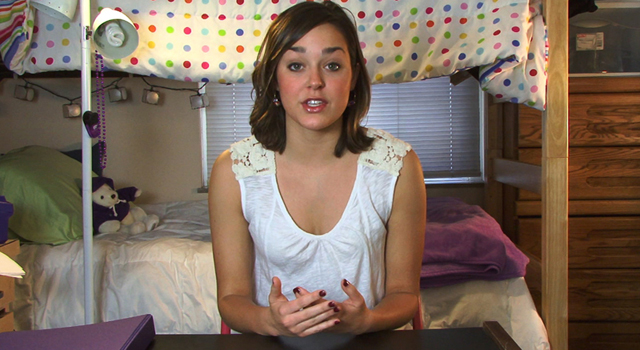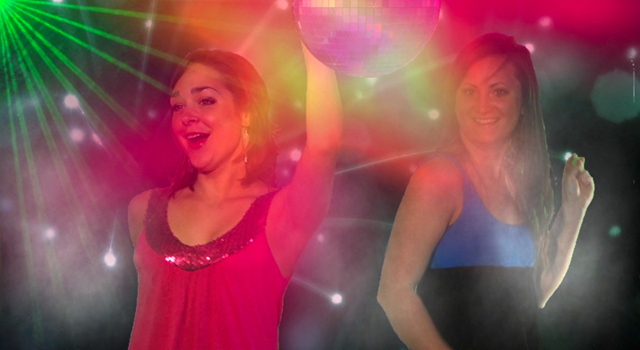This sidebar complements the feature article The University Life Café: Promoting Students' Emotional Health by Shalin Hai-Jew of Kansas State University.
The Suzy’s Strategies video/webisode series offers a collection of study strategies to help students succeed in college. Making important educational content both entertaining and relevant was the focus of the pedagogy (the science of teaching) and andragogy (the techniques for teaching adults) used to maximize the learning outcomes of the videos. Both "pedagogy" and "andragogy" apply in that the target audience includes younger college students, mainly freshmen starting college for the first time, and older adult learners, who may have forgotten some important strategies for succeeding in the classroom.
Suzy introduces the topic of each video before having a situational flashback:

One of the many online definitions of entertainment (or entertained) is "pleasantly occupied." This is a key metric in that the object of the video series is to have viewers pay attention, be entertained, learn, and return to watch a subsequent episode (or previous episodes). This goal closely relates to web usability concerns in general. To achieve the entertainment aspect, three key characteristics were purposefully addressed in making the videos: they needed to be fun, funny, and realistic.
Suzy is grooving and having fun with a friend instead of studying:

Fun: Watching the videos had to be as fun as possible to make the experience as engaging and pleasant as possible. Fun music and colorful graphics were integrated to make the videos seem exciting, with high production values. Additionally, the framework of the presentation (video-type diary) contributed to the excitement in that viewers feel they are getting personal information directly from the main actress, the beautiful "Suzy."
A laughable situation occurs during a Suzy’s Strategy episode:

Funny: It was also important that the videos didn’t come across as too serious, so viewers would be encouraged to observe and laugh (but still learn). Examples were identified that gave a comical illustration of the concept being described. This aided in learning (making an abstract idea more identifiable) and made the learning process more pleasant.
While studying, Suzy finds a place that is a little too comfortable:

Realism: It was important to make the character and the situations as real as possible so that the viewers could see themselves in the examples. As one video episode illustrates, it is fun to study with a bunch of friends in a party-like atmosphere, but it won’t be as effective as studying in a quiet library with dedicated study partners. It is one thing to be told this; it is another thing entirely to see it dramatized in a fun, funny, realistic way via the video story. The situation brought forth in the video resonates with students and provides a sense of realism, importance, and applicability to one’s own life.
Two other short films I created for the University Life Café videos dramatize two common and potentially stressful situations for students:
- Wednesday Group demonstrates some of the interactions that typically occur in a group counseling session.
- Sunshine on the Spiral depicts the experience of many students who have just left the military and begun college.
The use of edutainment, as a way of presenting information to students, has shown promise in that it is delivered via a means that students enjoy (YouTube) and is entertaining and educational without being too direct or overbearing. This technique, which works particularly well for an online site like the University Life Café, should be considered in multiple fields as an added tool to motivate students to learn and to help them retain information.
© 2009 Brent Anders. The text of this article is licensed under the Creative Commons Attribution-Noncommercial-Share Alike 3.0 license
